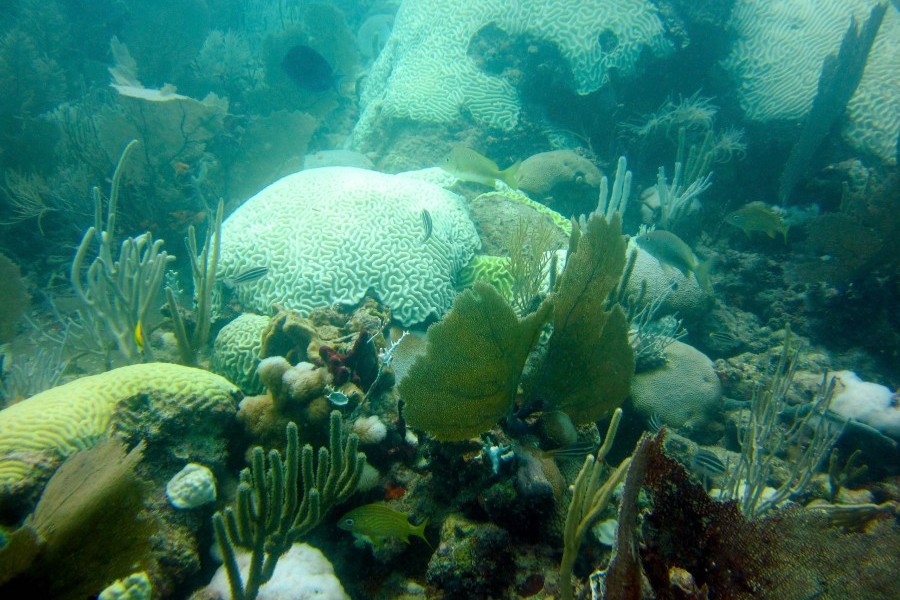Mote scientists will host a training session at 6 p.m. April 18 on Summerland Key for divers and snorkelers interested in volunteering for the Florida Keys BleachWatch program. This program provides early warnings of potential coral bleaching events in the Florida Keys National Marine Sanctuary during the warm summer months.
Bleaching occurs when heat or other stressors cause corals to lose their zooxanthellae — the algae that live inside their tissues and help supply the coral with necessary nourishment. If corals don’t recover their zooxanthellae over a period of time, they could ultimately die.
With BleachWatch volunteers providing early warnings of a coral bleaching event, the data will help ground-truth NOAA’s Coral Reef Watch Program’s satellite prediction models.
“BleachWatch invites people to be our eyes on the water,” said Cory Walter, staff biologist at Mote and coordinator of BleachWatch. “It is fairly simple to volunteer, and you’ll be helping us detect bleaching rapidly and document its severity in a standardized, quantitative way. We will provide the findings to resource managers with the Florida Keys National Marine Sanctuary, our partner in BleachWatch. We also work with The Nature Conservancy’s Florida Reef Resilience Program, which uses BleachWatch reports as an alert to direct more rigorous scientific surveys of coral bleaching, and ultimately, survival or death.”
How to participate in Florida Keys BleachWatch:
Recreational and professional divers and snorkelers can get involved by attending one training session (45-60 minutes). No scientific background is needed.
April 18: 6:00 p.m. at Mote’s Elizabeth Moore International Center for Coral Reef Research and Restoration, 24244 Overseas Highway, Summerland Key, FL 33042
Please RSVP to Cory Walter at: cwalter@mote.org or 305-395-8730
Visit the BleachWatch page on Mote’s website and the BleachWatch Facebook group to learn more.
Mote’s BleachWatch program has operated for more than a decade in partnership with the Florida Keys National Marine Sanctuary, part of the National Oceanic and Atmospheric Administration (NOAA). BleachWatch results are synthesized with NOAA’s monitoring data to provide scientists, resource managers and the public summaries of current conditions on Florida reefs during summer. Data are also available to support better predictions of bleaching and reef management planning.
BleachWatch receives funding from NOAA’s Coral Reef Conservation Program and Florida Keys National Marine Sanctuary, and from the Protect Our Reefs grants program, which distributes funds from sales of Florida’s Protect Our Reefs specialty license plate.


